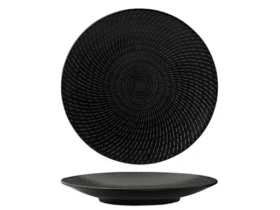For many people, the word “debt” carries a heavy, negative connotation. It’s often associated with financial stress, collection calls, and an endless cycle of bills that can feel nearly impossible to escape. However, not all debt is created equal. The truth is that, when used strategically, debt can be a powerful tool that helps you build wealth, secure assets, and set yourself up for future success.
In fact, many successful entrepreneurs and homeowners leverage debt to their advantage. Think about it—how many people could afford to buy a home without taking out a mortgage? Or start a business without using a HELOC (Home Equity Line of Credit)? Debt, when used wisely, can be the catalyst for achieving financial goals that would otherwise be out of reach.
So, how do you avoid the traps of bad debt and use it as a tool rather than a crutch? Let’s explore the ways you can make debt work for you and build real wealth along the way.
What is ‘Good Debt’ and How Can It Help You?
Not all debt is bad. In fact, there’s a significant difference between good debt and bad debt, and understanding this distinction is crucial in making debt work for you. Good debt is typically an investment in something that will appreciate in value or generate future income. On the other hand, bad debt often involves borrowing money to purchase things that lose value or don’t provide long-term benefits.
For example, taking out a mortgage to buy a home can be considered good debt because it’s an investment that can appreciate over time. Similarly, borrowing money to fund education or invest in a business can be considered good debt because these expenses can generate future returns or income.
In contrast, using credit cards for non-essential purchases—like dining out, shopping for the latest gadgets, or going on vacation—falls under the category of bad debt. While these purchases may bring short-term satisfaction, they don’t build long-term wealth or offer any lasting value. In fact, carrying high-interest credit card debt can quickly become a financial burden.
The key to making debt work for you is to use it to fund investments that will provide a return over time, rather than borrowing money for things that only offer temporary enjoyment.
Leveraging Debt to Build Wealth
One of the most effective ways to use debt as a tool is by leveraging it to build wealth. When you leverage debt, you’re borrowing money to increase your potential for making money. This can be done in a variety of ways, including:
- Real Estate Investing
Real estate is often considered one of the most reliable and lucrative investments. Many people use mortgages or HELOCs to purchase rental properties, flipping homes, or buy property in growing markets. The idea is that the value of the property will increase over time, and the rental income or sale of the property can generate passive income or significant returns. Leveraging debt to finance real estate investments allows you to control more assets than you could by using only your own cash. - Starting a Business
Starting your own business is another way to use debt as a tool for building wealth. Small business loans or lines of credit can provide the capital needed to start a company or expand an existing business. By investing borrowed money in the right opportunities, you can generate income and profits that will pay off your loan and create long-term financial success. - Investing in Stocks or Bonds
In some cases, borrowing money to invest in the stock market or bonds can be a smart strategy if you’re confident in your investment choices and have a solid repayment plan. This strategy, known as “margin borrowing,” can amplify your investment returns. However, this strategy comes with risks and should only be used by experienced investors who understand the potential for both gains and losses.
Using debt to fund these types of investments can allow you to create wealth at a faster pace than saving alone. By leveraging the power of debt, you’re not waiting for years to accumulate enough capital to buy assets—you’re using borrowed money to create more opportunities.
How to Avoid the Dangers of Debt
While debt can be a powerful tool, it’s important to be cautious and avoid falling into the traps of bad debt. Here are a few tips to help you use debt responsibly and ensure that it doesn’t become a financial burden:
- Understand the Terms of Your Debt
Whether it’s a mortgage, personal loan, or HELOC, make sure you fully understand the terms before borrowing. Pay attention to interest rates, repayment periods, and any penalties for late payments. If you’re using debt for investment purposes, make sure the return on investment will exceed the cost of borrowing. - Only Borrow for Assets, Not Liabilities
As mentioned earlier, good debt involves borrowing money for assets that will appreciate or generate income. Avoid using debt to purchase things that lose value, like luxury items or vacations. If you can’t afford it without taking on debt, it’s probably not a good financial move. - Have a Plan for Repayment
Before taking on any debt, make sure you have a solid plan for repayment. This includes budgeting for monthly payments, setting aside savings, and ensuring that you can comfortably handle the debt without sacrificing your financial stability. Having a clear repayment plan will help you avoid falling into a cycle of debt that’s difficult to break. - Use Debt to Enhance Cash Flow
The goal of using debt is to enhance your financial situation and improve your cash flow. Whether it’s through owning rental properties, investing in a business, or using a HELOC for necessary home improvements, debt should increase your income and wealth. Never take on more debt than you can handle or use debt to cover regular living expenses.
The Power of Compound Growth and Building Passive Income
One of the greatest benefits of using debt as a tool is the ability to harness the power of compound growth. By using borrowed funds to invest in appreciating assets or income-generating ventures, you can earn a return on your investment that exceeds the cost of borrowing.
For example, if you use a HELOC to finance a rental property, the rental income can pay off the loan while also providing cash flow. Over time, the property may appreciate in value, and you can sell it for a profit or continue collecting rent. The money you borrow works for you, creating passive income streams that help build wealth without you having to actively work for it.
Conclusion: Using Debt Responsibly to Build Wealth
Debt doesn’t have to be a negative force in your financial life. When used responsibly and strategically, debt can serve as a powerful tool that helps you invest in assets, build wealth, and achieve your financial goals. Whether it’s purchasing a home, investing in real estate, or starting a business, using debt wisely can help you accelerate your journey to financial freedom.
The key is to differentiate between good debt, which helps you build assets and generate income, and bad debt, which only creates financial stress and liability. By using debt as a tool to create wealth, and by managing it responsibly, you can set yourself up for long-term financial success.
















Leave a Reply